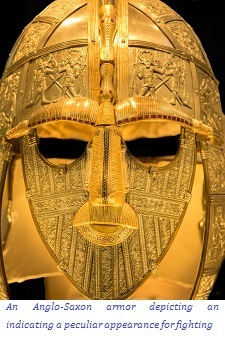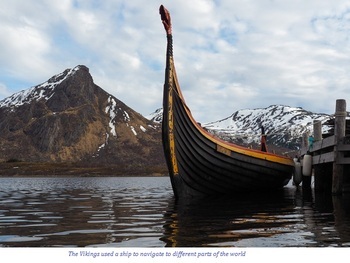

Britain or Great Britain is the largest of the British Isles that lies on the northwest coast of Europe, and the name itself is derived from a Celtic Word, which means White.
The vast and diverse history enriched in British culture culminates in its various periods. It can be divided into Pre-Historic Britain, Celtic Britain, Anglo- Saxon Britain, and Viking and Norman Britain.
All these periods have influenced Britain's culture and offer a fantastic insight into the past. Also, there are various archaeological findings that depict the life of the people in those times.
The year 4000 BC- 43 AD is commonly referred to as Prehistoric Britain; given the period, there are no written records. However, archaeologists have pieced together this part of history through archaeological surveys that found the remains of skeletons, temples, and homes. Also, the existence of modern technology helped determine the period it belonged to.
The period of Prehistoric Britain is divided into three parts: Neolithic( New Stone Age), Bronze Age, and Iron Age.
Neolithic( New Stone Age) − It was the period when agriculture started with the growing of their own food and the construction in the form of long barrows using flint tools was being used. Also, the rearing of cattle and clearing of forests for farming was taking place. Round-based pottery and lead-shaped arrowheads were a prominent part of this period.
Bronze Age − Around 2300 BC British people witnessed the use of copper weapons and jewellery. Initially, people only used copper for their use. However, later people discovered that adding a small tin would make a new alloy named Bronze which was harder and sharper and used to make new weapons.
Iron Age − Around 800 BC, Iron replaced Bronze as the main metal to make tools. People were living on thatched roofs, wheat beans, and brassicas were grown, cattle were reared, and hillforts like Maiden Castle were built. When Britain came in contact with the Roman World when Julius Caesar raided Britain in 55-54 BC this period came to an end.
This period, during the Iron Age, known as the Age of Celt In Britain, was when the whole region was divided into regions, and each had a different tribe; this was some 500 years before the first Roman invasion. These people are known as Celtic Britons who then diverged into the Welsh, Bretons, and Cornish people, and they had the same culture, religion, and language as Common Brittonic Language.
It was also the period when people were using the iron primarily for agriculture and ploughing the fields; this is an invention they are known for, and many hill forts were built during this time. They were often small though later large hill forts were built as well.
Druids were ambassadors during wars, upheld the law, and had their own universities for learning where traditional knowledge was passed on. They held the Celtic society together. As they were warring tribes, the invasion of Romans became easier as there was no united front, which eventually marked the end of this period.
When Germans started to rule Britain, the Anglo-Saxon period began. This period was unlike the others. Some of the characteristics of this period are as follows −
The Anglo-Saxon period in Britain spans six centuries, from 410 AD- 1066 AD.  It is a period when Germanic people inhabited and ruled Britain. These people were famous as Anglo-Saxons. They spoke various dialects, which evolved over time and gave birth to Old English.
It is a period when Germanic people inhabited and ruled Britain. These people were famous as Anglo-Saxons. They spoke various dialects, which evolved over time and gave birth to Old English.
The Celotics hated the Anglo-Saxons and labeled them as enemies and foreigners.
They were not a total stranger to the Island Of Britain as they were a part of the Roman army during the invasion, and after the departure of the Romans, the Anglo-Saxons started their own private conquest. They were met with no resistance from the people.
Many poems describe this period vividly, like Battle of Maldon, Beowulf, and the Ruin which encapsulate and educate the readers about those times.
Britain, under the Vikings coming from Norway, Denmark, and Sweden was different. Even though the Vikings settled in France, they kept giving continuous blows to the English kings. You can mark the period by reading the following characteristics.
Vikings originated from Scandinavian countries like Norway, Sweden, and Denmark and became known in the 8th- 11th century as warriors, tactical administrators, explorers of unknown lands, and smart traders.  They are even credited with reaching America some 1,000 years before Christopher Columbus.
They are even credited with reaching America some 1,000 years before Christopher Columbus.
The Vikings' vast ships and smart navigation techniques helped them in raiding new places when they were not farming, and they followed Norse Mythology and were fierce warriors that did not shy away from a fight.
The Normans were former Vikings who settled in Normandy, France, during the Norman conquest of England in 900 AD. The Vikings attacked the English king and had to pay heavy tributes after losing the battle to them. To end this ordeal, he sought the help of the duke of Normandy and married his sister, and this worked favorably for the English.
These periods of Prehistoric Britain, Celtic Britain, Anglo-Saxon Britain, and Viking and Norman Britain show the diverse groups of people who lived in the Isles of Britain and shaped the country as it is known today and shed light on how they lived and adapted to those times.
Q1. How did the Archaeologists piece together the history of Prehistoric Britain?
Ans. The Archaeologists pieced together the period of Prehistoric Britain through excavations and surveys of ruins of temples and human remains found with today's advanced technology. That is how we know that ancient Britain is divided into four parts.
Q2. What was discovered in the Bronze age?
Ans. Copper had been used for a long time, and folks started mixing a little tin with copper. Bronze would form a new alloy, which helped them make new tools easily.
Q3. Why did the Vikings use it to travel?
Ans. The Vikings were warrior groups from the Scandinavian countries of Denmark, Norway, and Sweden. They always looked for more trades and cultivation. That is why they are believed to have found America first.